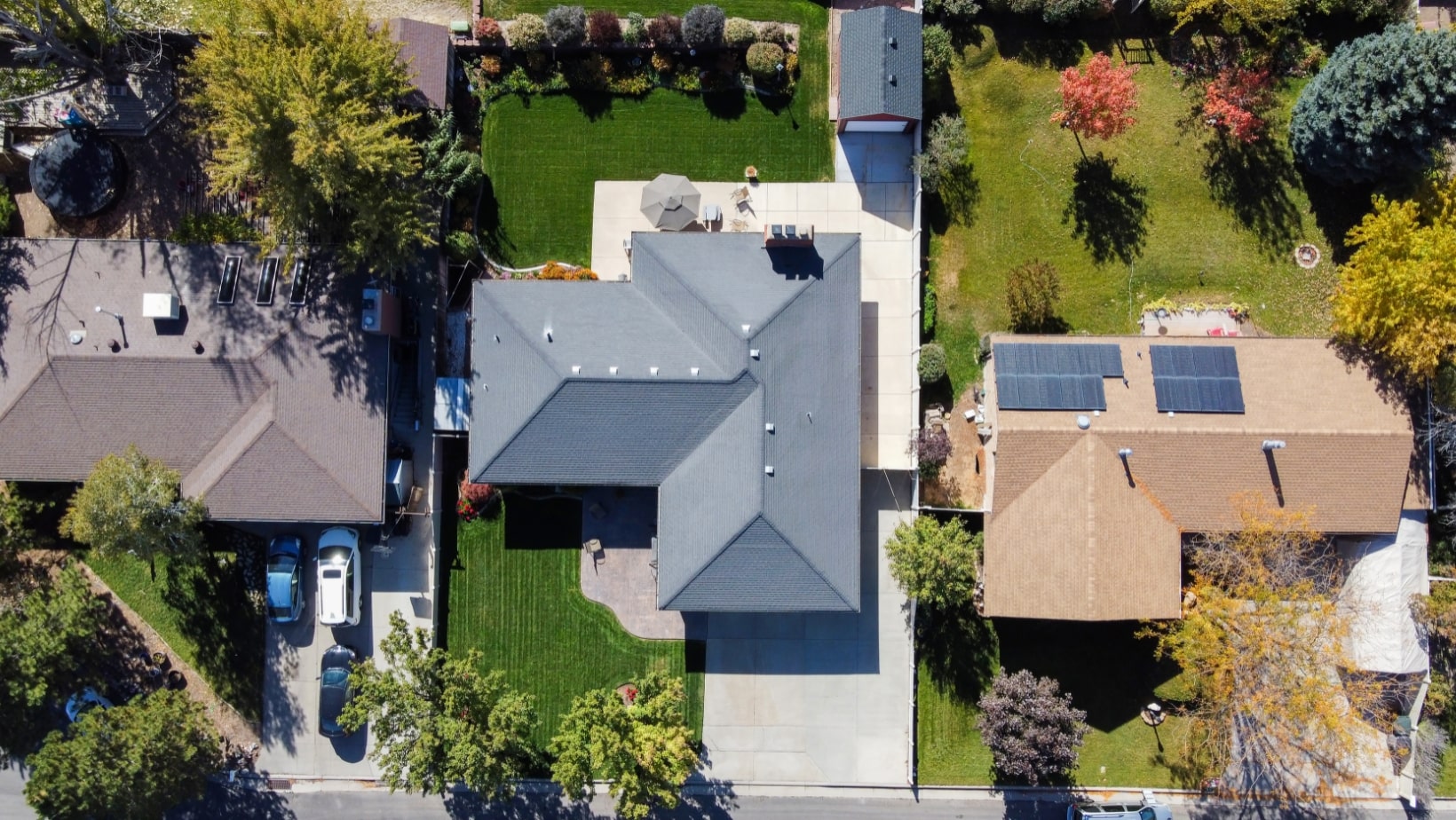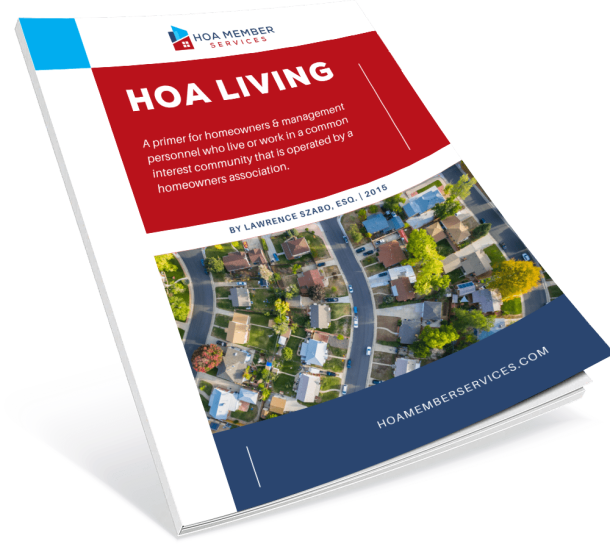The idea of a “full house” means different things to different people. For some, it’s a lively household buzzing with energy. For HOAs, however, it’s all about structure, order, and, apparently, occupancy limits.
But do they actually have the power to dictate how many people can live in your home? The short answer? Yes, but it depends. HOA rules, local laws, and even federal regulations all play a role in whether your HOA can enforce such restrictions.
So, what exactly are the rules? When can HOA limit number of occupants? Can they force you to comply? And what can you do if you think they’re overstepping their authority?
In this article, we’ll break down everything you need to know about HOA occupancy limits, helping you understand your rights and how to navigate any challenges that come your way.

The Legal Landscape: What Gives HOAs This Power?
It might seem unfair that a homeowners’ association (HOA) can dictate how many people can live in your home, but they’re not pulling these rules out of thin air. Their authority comes from a combination of legally binding documents, fair housing laws, and local zoning regulations.
Here’s how it all breaks down:
HOA Governing Documents
Every HOA has a set of rules that homeowners agree to when they buy a property in the community. These are called Covenants, Conditions & Restrictions (CC&Rs), and they often include occupancy limits.
Why? HOAs argue that these rules help maintain property values, prevent overcrowding, and ensure a certain standard of living in the neighborhood. If your HOA has restrictions on how many people can live in a home, chances are it’s buried somewhere in the CC&Rs — whether you realized it when you moved in or not.
Fair Housing Laws
HOAs can set rules, but they can’t discriminate. Federal and state fair housing laws prevent HOAs from enforcing occupancy limits that unfairly target families, people with disabilities, or any other protected groups.
This means an HOA can’t just decide to limit the number of occupants to, say, two people per bedroom if that would disproportionately impact families with children. If an HOA’s rules seem restrictive in a way that singles out certain groups, they could be violating the Fair Housing Act — and that’s a battle they don’t want to fight.
Local Zoning Codes
Beyond HOA rules, cities and counties have their own zoning laws that dictate how many people can live in a home. These laws are meant to prevent unsafe living conditions and ensure that homes aren’t turned into overcrowded rental properties.
Sometimes, an HOA’s rule might be even stricter than the local zoning code, but they can’t outright contradict it. If you’re ever unsure about an occupancy limit, checking both your HOA’s CC&Rs and local housing laws is a good first step.
Common HOA Occupancy Restrictions
When it comes to how many people can live in a home, HOAs often have rules that go beyond personal comfort — they’re about zoning laws, property values, and community standards.
Some of these restrictions can feel reasonable, while others might seem surprisingly intrusive. Either way, they’re something every homeowner or renter in an HOA-governed community needs to be aware of.
1. Per Bedroom or Square Footage Rules
You might assume that if a home has space, you can fill it with as many people as you want. Not so fast — some HOAs follow strict occupancy limits based on local zoning laws.
A common rule is the “two people per bedroom” guideline, or a restriction based on the home’s total square footage. These rules are often intended to prevent overcrowding, maintain property values, and avoid excessive wear and tear on shared community resources.
If you were planning to have extra family members move in or share your space with more people than expected, you might want to check what’s allowed before making any changes.

2. Family vs. Non-Family Distinctions
Can an HOA tell you who can live with you? Yes. In some cases, HOAs regulate not just how many people can live in a home, but who can live there.
While most people would say that’s a personal decision, some HOAs have their own definition. Some associations define “family” in a way that excludes roommates, extended relatives, or even unmarried partners.
This means that even if your home isn’t overcrowded, your living situation could still violate HOA rules. For non-traditional households, these restrictions can feel outdated and unfair, but in some communities, they’re still actively enforced.
3. Short-Term Rentals & Subleasing
Even if an HOA doesn’t outright limit the number of people living in a home, they can still indirectly control occupancy through rental policies. Many HOAs have strict rules against short-term rentals or subleasing, effectively preventing homeowners from renting out spare bedrooms or turning their homes into vacation rentals.
While these restrictions are usually put in place to maintain a sense of stability in the community and prevent constant turnover, they can also limit flexibility for homeowners who might need rental income to offset mortgage costs.
When an HOA Oversteps: Can They Actually Enforce These Limits?
It’s not uncommon for homeowners to feel like their HOA is constantly watching, ready to enforce rules that can feel overly strict or intrusive. But when it comes to limiting the number of people who can live in your home, can an HOA really dictate who can live with you?
While it might seem like they hold all the power, the truth is that the ability to enforce these occupancy limits isn’t always as straightforward as it seems. In fact, homeowners may have more leverage than they realize.
Fines, Warnings & Legal Threats – What’s Real vs. What’s Intimidation?
One of the most common tactics an HOA will use to enforce occupancy limits is issuing fines or sending warning letters. But just how serious are these threats?
In some cases, the HOA can fine you for violating occupancy rules, but their power to do so is often limited by local and state laws. The fines might be more of an intimidation tactic rather than something they can easily enforce.
If your HOA’s rules are seen as unreasonable or overly restrictive, challenging them becomes a much easier case to win in court.
Court Cases & Challenges
Homeowners across the country have stood up against their HOA’s occupancy limits — and in many instances, they’ve won. There have been numerous cases where courts have ruled that certain HOA occupancy rules violate fair housing laws or are simply unjustifiable.
Therefore, homeowners don’t always have to roll over when the HOA pushes unfair rules.

What You Can Do If Your HOA Is Overreaching
If you find yourself facing an overbearing HOA trying to enforce unreasonable occupancy limits, it’s crucial to know that you do have rights. First, it’s important to read your community’s governing documents carefully and check for any clauses that might conflict with local or state laws.
If you feel your HOA is acting beyond its authority, consider talking to a lawyer to explore your options. Joining forces with other residents who feel the same way can also strengthen your position.
Homeowners can fight back through organized petitions or even seek legal recourse if necessary, and the best part is, you’re not alone — many communities have successfully pushed back against overreaching HOA rules.
Loopholes, Exceptions, & Special Cases
When it comes to HOA rules on occupancy limits, things aren’t always as straightforward as they seem. While most HOAs set clear guidelines on the number of people allowed in a home, certain exceptions, legal protections, and special circumstances can blur the lines.
Here are a few gray areas that can lead to conflicts and even legal challenges:
Guests vs. Residents: When Does a Long-term Guest Become an “Illegal Occupant”?
Having family or friends stay over for a few days is completely normal, but what if they never really leave? HOAs often struggle to define the difference between a temporary guest and an unauthorized resident.
Some associations set firm time limits, such as a 30-day maximum per year, while others consider factors like whether the person has a key, consistently parks in the community, or receives mail at the address.
If an HOA determines that a guest has essentially moved in without being on the lease or deed, they might demand that the homeowner formally add them or even ask them to leave.

Fair Housing & Disability Accommodations: How Reasonable Accommodations Might Override Occupancy Rules.
Occupancy limits aren’t absolute, especially when disability accommodations come into play. Under the Fair Housing Act, HOAs must make “reasonable accommodations” for individuals with disabilities, which can sometimes mean allowing an extra occupant, such as a live-in caregiver or aide, even if that exceeds the usual limit.
Denying such accommodations could be considered discrimination, opening the HOA up to legal trouble. Homeowners facing pushback on this issue may have the right to challenge the restriction and request an exception.
Grandfathering In: What Happens If a Rule Changes After You’ve Moved In?
HOA rules evolve over time, but what happens when new rules conflict with how people are already living? In many cases, communities use a “grandfathering” approach, allowing existing residents to continue living under the old rules while applying the new ones moving forward.
For example, if an HOA reduces the maximum number of occupants per unit, homeowners already exceeding the new limit may not be forced to downsize immediately. However, these exceptions often expire once the property changes hands, meaning the next buyer would be subject to the updated rules.
How to Check If Your HOA Can Limit Occupants
If you’re wondering whether your HOA has the power to limit the number of people living in your home, here’s how you can find out where you stand:
1. Read Your HOA Documents
Start with the fine print — your HOA’s Covenants, Conditions, and Restrictions (CC&Rs) and bylaws. These are the official documents that outline what you can and can’t do as a homeowner in the community. Look for anything related to:
- Occupancy limits – Some HOAs impose restrictions on how many people can live in a unit, often based on arbitrary numbers rather than legal standards.
- Tenant or guest policies – If you rent out your home or have long-term guests, your HOA might try to enforce restrictions that aren’t actually legal.
- Enforcement and penalties – See if there’s a clause stating what happens if you “violate” an occupancy rule. Does the HOA issue fines? Take legal action?
HOA documents can be dense and full of legal jargon, so if anything seems unclear, you’re not alone. Many homeowners don’t realize that some HOA rules overstep legal boundaries.
2. Check Local Housing Laws
Even if your HOA has clear rules about occupancy, that doesn’t necessarily mean they hold up in court. Local and state laws often take precedence over HOA regulations, especially when it comes to housing rights.
Check your city’s zoning laws and health codes, which usually set legal occupancy limits based on square footage, bedroom count, and safety considerations.
For example, the Federal Fair Housing Act protects against discrimination, and some HOA occupancy limits could be seen as unfair restrictions against families or multi-generational households.
If your HOA’s rule conflicts with city, state, or federal law, the law wins — not the HOA.
3. Talk to an HOA Attorney
If you’re facing resistance from your HOA or being threatened with fines, it might be time to consult an expert. An experienced HOA attorney can:
- Review your HOA documents and local laws to determine if the rule is enforceable.
- Communicate with your HOA on your behalf and challenge unfair restrictions.
- Represent you in legal disputes if your HOA insists on enforcing unlawful occupancy limits.
Can a Landlord Limit the Number of Occupants?
Yes, but there are rules they have to follow. Just like HOAs, landlords can’t just decide on a whim to limit how many people live in a rental. Instead, they have to stick to state and local laws, fair housing regulations, and sometimes even HOA rules.

If they get it wrong, they could face fines, lawsuits, or even risk violating their own lease agreements.
Here’s what landlords need to consider:
- Lease Agreements vs. HOA Rules – If an HOA has occupancy limits in place, landlords typically have to follow them too. That means even if a landlord is personally okay with more people living in the unit, they might be forced to enforce the HOA’s restrictions. Ignoring these rules could lead to fines or even legal trouble with the association.
- State & Local Tenant Laws – Many states and cities have their own maximum occupancy laws that limit how many people can legally live in a rental. These rules are usually based on square footage, number of bedrooms, or safety regulations. A landlord can’t just set their own number if it conflicts with these laws.
- Fair Housing Considerations – Landlords need to be careful when setting occupancy limits to avoid violating the Fair Housing Act. For example, they can’t refuse tenants based on family status, meaning they can’t enforce rules like “no kids allowed” or cap the number of occupants in a way that unfairly excludes families with children. Doing so could be considered discrimination and result in legal action.
- Short-Term Rentals & Liability Issues – Many landlords impose occupancy limits to prevent HOA violations or avoid potential liability issues. If a short-term rental is overcrowded, it can lead to excessive wear and tear, noise complaints, or even safety hazards. Plus, HOAs often have strict rules on short-term rentals, and exceeding occupancy limits can lead to hefty fines.
At the end of the day, landlords do have the right to set reasonable occupancy limits, but those limits must align with legal requirements and HOA rules. The key is to strike a balance, protecting their property while ensuring their policies are fair and compliant with the law.
Frequently Asked Questions (FAQs)
- Can an HOA deny a family with children based on occupancy limits?
Not necessarily. The Fair Housing Act protects against discrimination based on familial status, meaning an HOA cannot enforce overly restrictive occupancy rules that unfairly limit families with children. - What happens if a homeowner exceeds the occupancy limit?
If a resident exceeds the HOA’s legally enforceable occupancy limits, they may receive warnings, fines, or even legal action. However, homeowners can challenge unfair restrictions, especially if they believe they violate housing laws. - Can an HOA enforce occupancy limits different than the city or county?
HOAs can have their own rules, but they cannot enforce limits that contradict local housing codes. If a local law allows more occupants than an HOA’s rules, the local law usually takes precedence. - Are there exceptions to occupancy limits?
Yes, exceptions may apply in cases involving disabilities or reasonable accommodations under the Fair Housing Act. For example, a homeowner may be allowed to house a live-in caregiver even if it exceeds typical occupancy limits. - What should homeowners do if they disagree with an HOA’s occupancy restrictions?
Homeowners can review the governing documents, consult local housing codes, and seek legal advice if necessary. In some cases, they can challenge unfair rules through mediation, a vote among HOA members, or legal action. - Do short-term rentals or subleases affect occupancy limits?
Yes, many HOAs have additional restrictions on short-term rentals or subleasing, which can impact occupancy limits. Some associations set stricter rules to maintain community stability and prevent excessive turnover. - Can an HOA limit guests or temporary residents?
HOAs may have policies on long-term guests or temporary residents, often restricting stays beyond a certain number of days. However, these rules must be reasonable and not violate a homeowner’s rights to host visitors.

Can HOA Limit Number of Occupants – The Bottom Line
Yes, your HOA can limit the number of occupants, but only within legal boundaries. They have the power to enforce reasonable rules, but they can’t overstep the law.
That’s why homeowners need to know their rights before agreeing to any occupancy limits. If something doesn’t seem right, don’t just accept it; push back, but do it strategically.
Need help navigating HOA restrictions? Get personalized support from an experienced HOA attorney with our membership plans. Don’t let your HOA call all the shots — know your rights and take control today!


